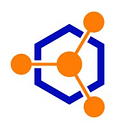The Power of ELISA in Monoclonal Antibody Research: What You Need to Know

The rapid advances in monoclonal antibody research have offered hope to individuals suffering from diverse medical conditions. With enhanced therapeutic potential and specificity, monoclonal antibodies are providing targeted and personalized interventions. As clinical and research applications expand, monoclonal antibodies will shape the future of the biomedical and clinical sectors.
Monoclonal antibodies are an advanced class of therapeutics that have transformed modern medical sciences. With enhanced versatility and precision, monoclonal antibodies offer promising solutions for multiple conditions. From autoimmune disorders to cancer and infectious diseases, monoclonal antibodies are shaping healthcare and patient care. Let us dive deeper into monoclonal antibodies and understand the role of ELISA assays in advancing them.
Application of monoclonal antibodies across different therapeutic areas
Oncology: monoclonal antibodies have revolutionized cancer research. They can target cancer cells or block cell growth.
Infectious disease: monoclonal antibodies can neutralize pathogens, modulate immune response, and prevent viral entry. For example, monoclonal antibodies are proven critical by targeting the spike protein and inhibiting the ability of the Sars-CoV-2 virus to infect human cells.
Autoimmune disease: monoclonal antibodies are specifically engineered to block molecules associated with autoimmune diseases and can slow disease progression and reduce symptoms. Monoclonal antibodies such as infliximab and adalimumab have revolutionized the treatment and management of chronic conditions and improved the quality of countless patients.
Additionally, monoclonal antibodies are explored for other domains, including neurological disorders, cardiovascular disease, and targeted drug delivery systems. Their potential application and adaptability in multiple therapeutic areas are critical in advancing biomedical research.
Monoclonal antibodies and ELISA assays
Monoclonal antibodies are laboratory molecules that copy the natural immune response. They are created by cloning a single plasma cell to develop several identical antibodies. These antibodies can target and bind to particular cell pathogens or proteins within the body, facilitating tailored and precise interventions.
All monoclonal antibodies have the same antigen recognition sites, biological interactions, affinity, and effects. These features make monoclonal antibodies different from polyclonal antibodies as they have diverse protein sequences that recognize different epitopes. Monoclonal antibody-based treatments are generally administered intravenously and are used in research, diagnosis, and disease treatment. They can be employed as probes in testing kits or laboratories. Hence, monoclonal antibodies have applications in several conditions, such as cancer, osteoporosis, eye conditions, autoimmune disease, migraines, neurological disorders, high cholesterol, etc.
Besides, monoclonal antibodies can be administered in different forms, including as a standalone therapy and as conjugated therapy by combining with another drug and modified to target specific antigens. Moreover, monoclonal antibodies are produced in four unique ways, such as:
- Murine: antibodies derived from mouse proteins
- Chimeric: monoclonal antibodies combining human and mouse proteins
- Humanized: antibodies where a small mouse protein portion is fused with human protein
- Human: antibodies composed entirely of human proteins
ELISA assays play a crucial role in monoclonal antibody research. The two primary aspects of ELISA monoclonal antibody relation include monoclonal antibody production and diagnostic applications. The following section discusses each of these elements in detail.
Monoclonal antibody production
Monoclonal antibodies are produced from a single B lymphocyte clone. The hybridoma technique for generating monoclonal antibodies was first used in 1975. The first step involves immunization of mice with antigens emulsified with adjuvant. After a booster injection, the animal is sacrificed once enough antigens are produced. The collected blood is assayed to estimate the produced antibody using techniques such as ELISA assays. Similarly, at the end of monoclonal antibody production, ELISA assays are used to assess the antigen-binding capacities of antibodies secreted by clones of B cells. Once monoclonal antibodies are generated, ELISA assays can perform quality control assessments to ensure that the antibodies are specific, potent, and without contaminants.
Diagnostic applications
Laboratories such as HPLC testing services and ligand binding assay developers use monoclonal antibodies in several diagnostic assays to detect and quantify specific analytes in complex biological samples. ELISA assay is one such robust diagnostic tool that uses monoclonal antibodies.
High-affinity binding characteristics and high specificity make monoclonal antibodies an ideal reagent in immunodiagnostic techniques. They can help diagnose infectious diseases and detect specific antigens or antibodies in serological evaluations. Monoclonal antibodies are widely used in ELISA assays. In an ELISA assay, monoclonal antibodies are fixed onto the plate surface, where they act as a capture antibody. The target analyte present in the sample binds to the capture antibody.
The presence or absence of the target analyte is confirmed using a secondary labeled monoclonal antibody. This labeled antibody generates a detectable signal, indicating the presence or absence of the target molecule and its quantity in the sample. ELISA formats are available in direct, indirect, sandwich, and competitive versions. However, in all assay formats, the immobilized monoclonal antibody needs to interact with the target analyte.
Conclusion
As monoclonal antibody technology continues to evolve, a collaborative initiative between researchers, drug developers, and clinicians is critical. With combined efforts, these advanced modalities can help accelerate drug development and ensure the generation of safe yet effective drug products.
